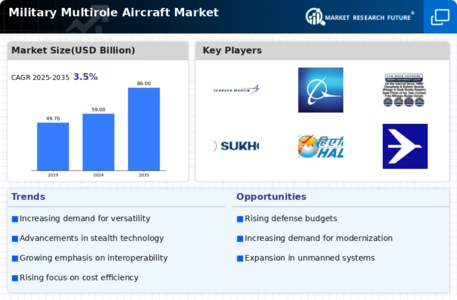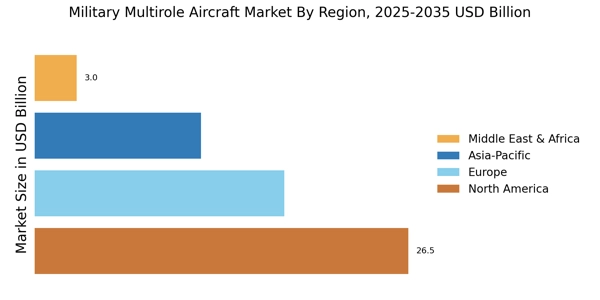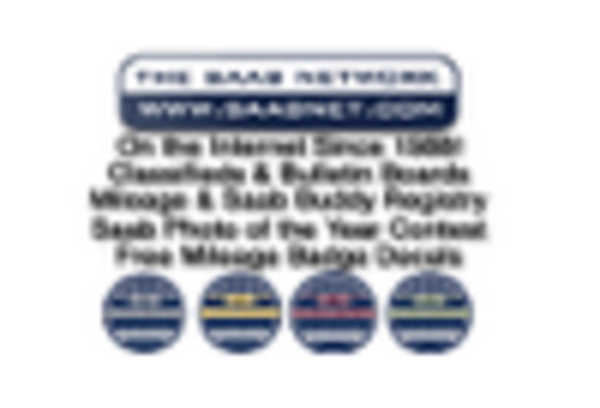Increased Defense Budgets
The Military Multirole Aircraft Market is experiencing a notable surge in defense budgets across various nations. Governments are prioritizing military modernization, which includes the acquisition of advanced multirole aircraft. For instance, countries such as India and Brazil have allocated substantial funds to enhance their air capabilities. This trend is driven by the need to address emerging security threats and maintain strategic advantages. As a result, the demand for versatile aircraft that can perform multiple roles, including air-to-air combat and ground support, is likely to rise. The increased financial commitment to defense is expected to bolster the Military Multirole Aircraft Market, leading to a more competitive landscape among manufacturers.
Technological Innovations
Technological advancements play a pivotal role in shaping the Military Multirole Aircraft Market. Innovations in avionics, weapon systems, and stealth technology are enhancing the operational capabilities of multirole aircraft. For example, the integration of artificial intelligence and advanced sensors is enabling real-time data processing and improved situational awareness. This evolution not only increases the effectiveness of missions but also attracts investments from defense contractors seeking to develop next-generation aircraft. The ongoing research and development efforts are likely to result in the introduction of more sophisticated platforms, thereby driving growth in the Military Multirole Aircraft Market.
Rising Geopolitical Tensions
The Military Multirole Aircraft Market is significantly influenced by rising geopolitical tensions in various regions. Nations are increasingly aware of the need to bolster their defense capabilities in response to potential threats. For instance, the ongoing conflicts in Eastern Europe and the South China Sea have prompted countries to reassess their military strategies. This reassessment often leads to increased procurement of multirole aircraft, which can serve multiple functions in diverse operational scenarios. As nations seek to enhance their deterrence capabilities, the demand for multirole aircraft is expected to grow, thereby impacting the Military Multirole Aircraft Market positively.
Focus on Multirole Capabilities
The emphasis on multirole capabilities is a driving force in the Military Multirole Aircraft Market. Military forces are increasingly seeking aircraft that can perform a variety of missions, including reconnaissance, air superiority, and ground attack. This versatility allows for more efficient resource allocation and operational flexibility. As a result, manufacturers are focusing on developing platforms that can seamlessly transition between different roles. The demand for such adaptable aircraft is likely to increase, as military planners recognize the strategic advantages of multirole capabilities. This trend is expected to foster innovation and competition within the Military Multirole Aircraft Market.
International Collaboration and Partnerships
International collaboration and partnerships are emerging as a key driver in the Military Multirole Aircraft Market. Countries are increasingly engaging in joint ventures and co-development programs to share costs and expertise in aircraft development. For instance, partnerships between nations can lead to the creation of advanced multirole platforms that leverage the strengths of each participant. This collaborative approach not only accelerates the development process but also enhances interoperability among allied forces. As nations seek to optimize their defense spending and capabilities, such collaborations are likely to become more prevalent, thereby influencing the dynamics of the Military Multirole Aircraft Market.


















Leave a Comment